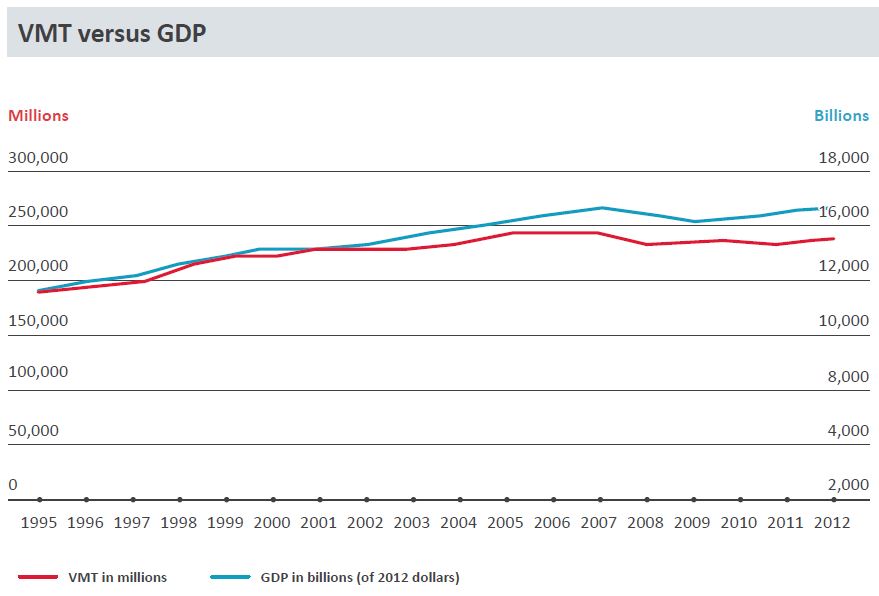In the United States, vehicle miles traveled (VMT) rose at a similar rate to gross domestic product (GDP) during the seven decades after the Great Depression. With the exception of a decline in both GDP and VMT in 2007-2008, VMT began to grow at a slower pace than GDP; but why?
Since 2003, VMT declined slightly and then fell flat as GDP continued to rise. While the definitive cause of the recent decoupling remains unknown, a look at the complex factors shaping the relationship between VMT and GDP points to several explanations.
Professionals and academics have long explored the causal link between GDP and VMT without consensus, asserting four conflicting conclusions: VMT influences GDP, GDP influences VMT, GDP and VMT influence each other (bidirectional causality), and neither VMT nor GDP affect one another. While methodological differences contribute to the disparity in results, a closer look at context may also explain the changing relationship. When highway construction and growth in car ownership peaked in the 1950s, a strong bidirectional link between VMT and GDP was observed. In contrast, analyses examining more recent years, when highway construction subsided and car ownership reached saturation, reveal a weaker correlation between the two variables.
Land use patterns have also been strongly linked to declining VMT which offers insight into the weakening tie between GDP and VMT. Land use policies increasingly include measures promoting density, such as financial incentives for infill development, urban growth boundaries, and goals within TDM strategies. While density encourages economic growth (and even supports it due to agglomeration benefits), it lowers VMT since businesses and residences are located within close proximity. These recent policy objectives may therefore explain how GDP has recently increased at a higher rate than VMT.
Behavioral change of the millennials also offers a plausible explanation for the decline of growth in VMT. The current generation of young professionals exhibits a strong desire for automobile-independent lifestyles in urban areas; driving licenses for teens and young adults, once considered a ticket to freedom, are at their lowest numbers since the 1960s. This preferential shift essentially reverses the trend toward an auto-centric, suburban lifestyle that dominated the behavior of baby boomers in the post-World War II era.
Historical context, land use, and preference shifts provide a snapshot of the many possibilities for the slower growth rate in VMT (compared to previous years) in spite of a growing economy. Understanding how these factors affect the economy and travel behavior can provide guidance for transportation professionals in public and private agencies, as they influence the outcome of TDM, managed lanes, and rail projects.
